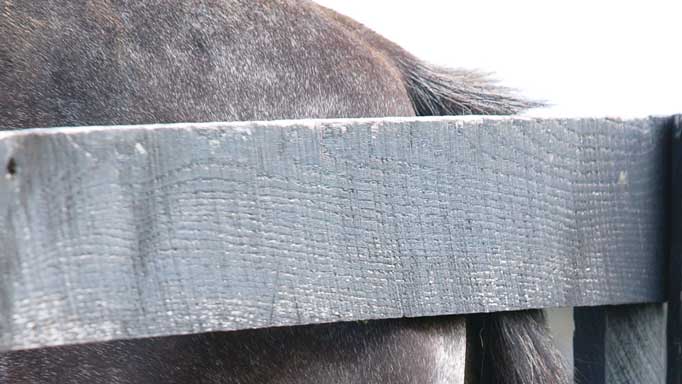Tail rubbing – accomplished by vigorous scraping against fence posts, stall walls or any immovable object – can be a symptom of a number of conditions. The most common culprit is pinworm (Oxyuris equi) egg infestation around the anal region, but the pruritus (itching) can also be caused by hypersensitivity to insect bites, lice infestation, or mange. Even certain food allergies, such as to alfalfa, wheat, oats, concentrates, bran, and supplements, can cause tail rubbing, as can noxious plants and behavioural problems caused by stress or boredom.
Pinworm egg infestation is invisible to the naked eye but can be determined by your vet, who will adhere clear tape to the perianal area and examine it under a miscroscope to see if eggs are present. A regular deworming program should eradicate the parasites, although if the anal region is abraded, antibiotics and antifungals may be necessary to assist healing. Other horses in the herd should be inspected, especially if the affected horse was rubbing on feed buckets, hay feeders, etc., which can distribute pinworm eggs. Again, a comprehensive deworming schedule will prevent such problems.
If the tail-rubbing is seasonal, hypersensitivity to the salivary proteins in insect bites (especially culicoides gnats causing “sweet itch”) may be the cause. Fans in stalls, insecticide spray, and not pasturing horses near standing water or at dusk and dawn (when the gnats typically feed) are preventive measures. Treatment includes topical anesthetic and/or oatmeal therapy or steroids.
Other possible causes include a dirty sheath (wash gently and thoroughly), contact dermatitis (environmental, such as from bedding), or just dry, itchy skin (wash with moisturizing agents and anti-itch medication). A number of conditions could be at play, so if in doubt, consult your veterinarian.

